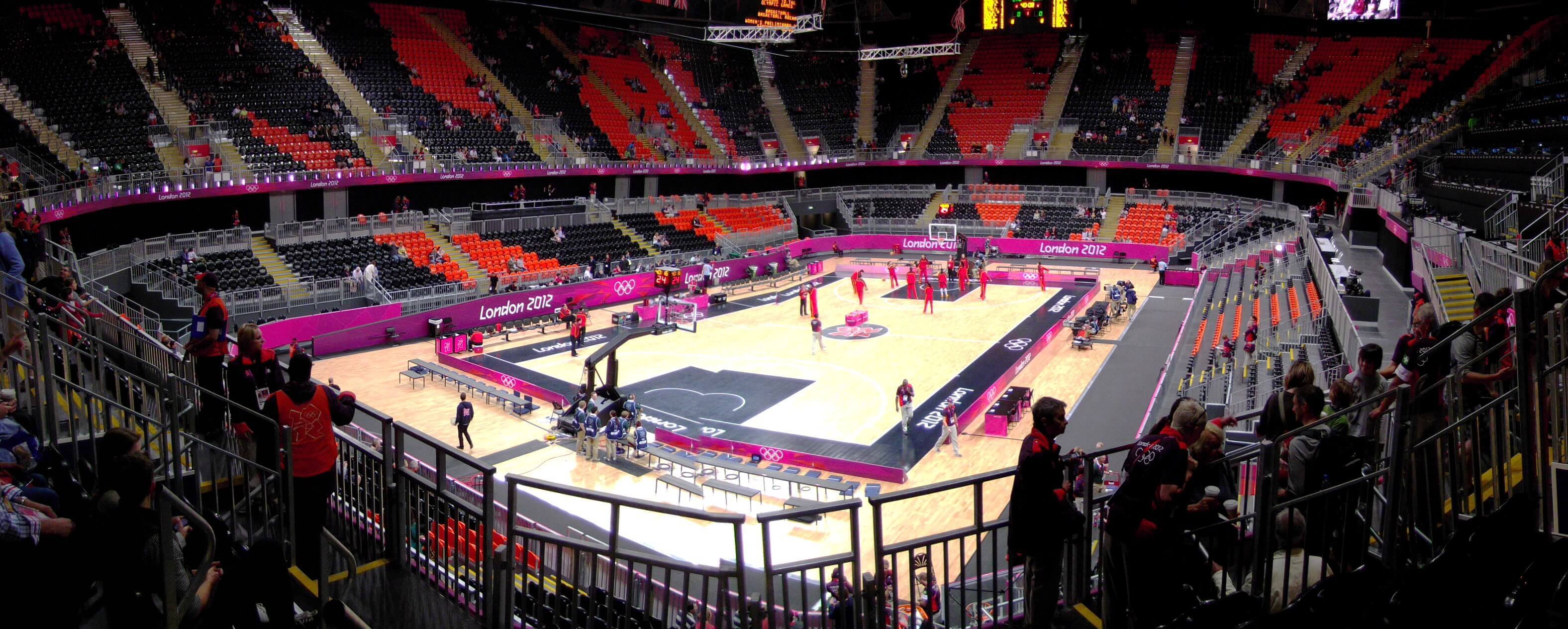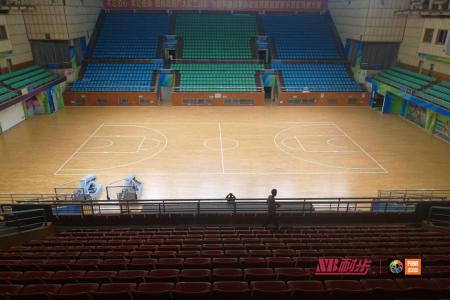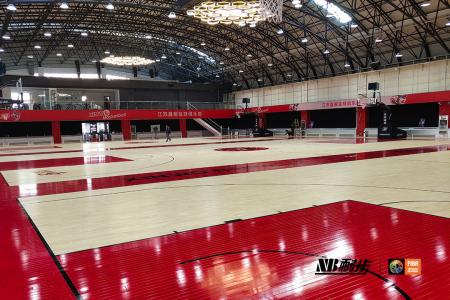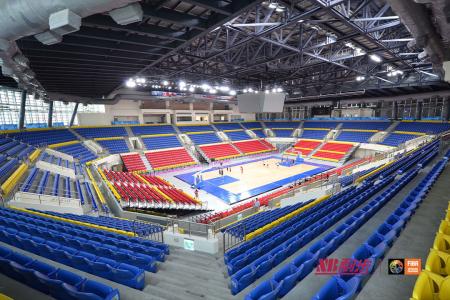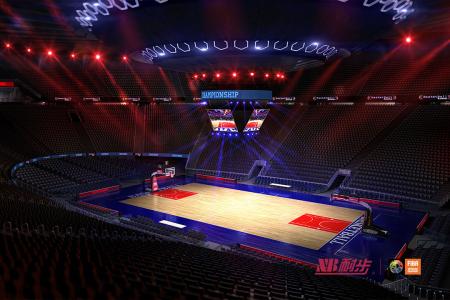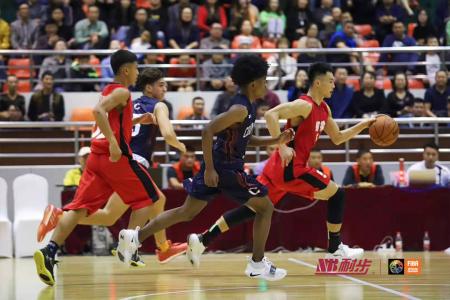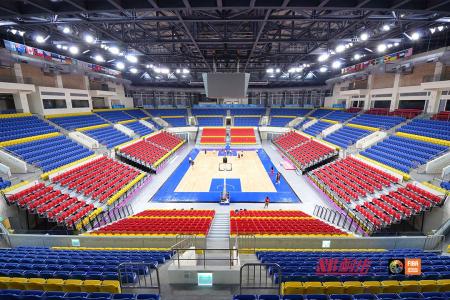*wooden floors for new gymnasiums** standard
Foreword
The main content of the product performance requirements of this national standard directly refers to GB/T 15036.1 ~ 15036.2 - "Solid Wood Flooring" standard, GB/T18103-2000 "Solid Wood Composite Flooring" standard, LY/T1614-2004 "Solid Wood Integrated Flooring" standard Floor "** standard, GB/T 20240-2006 "Bamboo Floor"** standard, while fully considering the characteristics of wooden floors for gymnasiums.
The functional indicators and experimental methods of sports wooden floors for competition in this national standard are equivalent to the German industrial standard DLNV18032-2: 2001 "Requirements and Tests for Gymnasiums for Exercise and Competitions"; wooden floors for training, teaching and fitness The impact absorption rate and standard vertical deformation index are formulated by themselves, and the other functional indexes and test methods are equivalent to DLNV18032-2:2001.
Appendix A and Appendix B of this ** standard are informativeappendix.
This ** standard is proposed by the ** Forestry Bureau.
This national standard is under the jurisdiction of the National Wood-based Panel Standardization Technical Committee, and the National Wood Standardization Technical Committee participates.
This ** standard is published.
Wooden floors for gyms
1 Scope of this **Standard
This national standard specifies the terms, definitions, classifications, marking, packaging, transportation and storage of wooden floors for gymnasiums; technical requirements, inspection methods, and inspection rules for product performance; functional technical requirements, test methods, inspection point locations and Judgment rules; stipulate the laying operation rules, basic regulations, acceptance content, etc. of wooden floors for sports competitions, training and teaching gymnasiums.
This national standard applies to wooden floors in gymnasiums for basketball, volleyball, handball, table tennis, gymnastics, martial arts and other competitions, training, teaching and fitness.
2Normative references to this **Standard
The terms in the following documents become the terms of this ** standard through the reference of this ** standard. For the dated reference documents, all subsequent amendments (excluding errata content) or revisions do not apply to this * *Standards, however, parties to agreements based on this standard are encouraged to investigate the availability of the latest versions of these documents. For undated references, the latest edition applies to this standard.
GB/T 6491—1999 Drying quality of sawn timber
GB/T 15036.1~15036.2—2001 Solid wood flooring
GB/T 18103—2000 Solid wood composite floor
GB 18580—2001 Limits of formaldehyde emission in wood-based panels and their products for interior decoration materials
GB 18581—2001 Limits of harmful substances in solvent-based wood coatings for interior decoration materials
GB/T 20240—2006 Bamboo Flooring
GB50300 Unified Standard for Acceptance and Acceptance of Construction Quality of Construction Engineering
GB50352 Code for Indoor Environmental Pollution Control of Civil Construction Engineering
LY/T 1614—2004 Solid wood integrated floor
3Terms and Definitions in this **Standard
GB/T 15036.1-2001, GB/T 18103-2000, GB/T 20240-2006 and LY/T 1614-2004 established and the following terms and definitions apply to this standard.
3.1
wooden flooring
Floors processed directly from wood or bamboo or combined with wood and bamboo.
3.2
Shock absorption rate (Fr) forcereduction
When using the impact force tester to impact the solid ground (concrete ground) and the tested surface respectively, the rate of change of the rebound force (reverse impact force) of the solid ground (concrete ground) and the tested surface is tested.
3.3
Standard vertical deformation (Vd) vertical deformation
Using the vertical deformation detector, the pressure in the axis direction of the drop weight of the detector causes the surface layer of the wooden floor to concave and deform in the vertical direction.
3.4
Relative vertical deflection rate (A500) area deflection
Using the vertical deformation detector, when the pressure in the axis direction of the falling weight of the detector makes the surface of the wooden floor sag and deform in the vertical direction, the relative vertical deformation rate is the same as the vertical deformation at the specified distance and the vertical deformation in the axis direction of the falling weight. percentage.
3.5
Ball rebound rate (Br) ball rebound
Measure the ratio of the rebound height of a standard basketball on a wooden floor and a solid floor (concrete floor), expressed as a percentage.
3.6
rolling load behavior under a rolling load
The ability of wood floors to withstand reciprocating rolling loads
3.7
Sliding friction coefficient (Sp) sliding properties
The ratio of friction and positive pressure between the athlete and the floor surface during exercise.
3.8
Residual impression
Apply a stable and long-term force to the tested surface to deform the wooden floor. When the force disappears, the traces left on the surface of the wooden floor.
3.9
wooden flooring outmost layer
Special wooden floor for indoor gymnasium.
3.10
rough floor (floor lining) load distribution pallet
It is closely attached to the lower part of the wooden floor surface layer and plays the role of leveling, increasing strength and dispersing stress.
3.11
isolation layer (moisture barrier) islation layer
Insulation or moisture barrier material placed between the wood floor surface and the raw floor.
3.12
Keel (joist) load distribution strip
A supporting wood floor skeleton installed under the wood floor surface.
3.13
auxiliary keel assistant load distribution strip
Skeleton for added keel stabilization
3.14
cushion block
The elastic material between the keel and the surface layer of the wooden floor board, or between the keel and the base layer of the building structure.
3.15
sound absorption layer
Porous sound-absorbing material filled between the wooden floor and the base of the building structure.
3.16
wooden flooring base
The structural layer below the surface layer of the wooden floor, including the raw floor layer, the keel, the auxiliary keel, the pad, the filling layer, etc.
3.17
construction base
The base layer of the building under the wooden floor.
4Categories
4.1 According to the purpose;
a) For competition;
b) For training, teaching and fitness.
4.2 By product:
a) solid wood floor
b) Parquet floor
c) Solid wood integrated floor
d) Bamboo Flooring
4.3 Classification by function
a) Motor function
b) Protection function
c) Basic technical functions
5Technical Requirements
5.1 Product performance requirements
5.1.1 Tree species
The solid wood floor, solid wood integrated floor and solid wood composite floor surface used in the gymnasium are mainly suitable for oak, ash, birch, maple, beech and so on.
5.1.2 Technical requirements for solid wood flooring
5.1.2.1 Appearance quality
It should meet the requirements of the first-class products in Table 1 of GB/T15036.1~2001.
5.1.2.2 Specifications and Dimensions
a) Length ≥ 200 mm, width 50 mm ~ 150 mm.
b) Thickness is 22 mm, 24 mm.
c) The machining accuracy should meet the requirements of Table 2 and Table 3 in GB/T15036.1~2001, and the thickness deviation of the unpainted floor should be +0.5 0mm
Note: Specifications and dimensions can also be determined according to the agreement between the supplier and the buyer.
5.1.2.3 Physical Properties
The physical and mechanical properties of solid wood floors for gymnasiums are shown in Table 1 of this ** standard.
Table 1 Physical and mechanical properties index of solid wood floor for gymnasium


|
Test items
|
unit
|
Index value
|
|
moisture content
|
%
|
6.0≤moisture content≤equilibrium moisture content in various regions of my country
|
|
Wear-resistant paint surface
|
g/100r
|
≤0.15, and the paint film is not worn out after grinding for 100r
|
|
paint film adhesion
|
class
|
0~1
|
|
Film hardness
|
—
|
≥H
|
|
Note: Moisture content refers to the moisture content of solid wood flooring products before unpacking and use. For the equilibrium moisture content of various regions in my country, see Appendix A in GB/T6491-1999
|
||
5.1.3 Technical requirements for parquet
5.1.3.1 Appearance quality
Should comply with the provisions of GB/T18103-2000 Table 1 first-class products.
5.2.3.2 Specifications and Dimensions
a) Length ≥900mm, width ≥90mm.
b) The thickness is 12 mm~30 mm.
c) Surface thickness ≥ 4 mm.
d) The machining accuracy shall comply with the provisions of Table 4 in GB/T15036.1~2001, and the thickness deviation of the unpainted floor shall be +0.5 0mm
Note: Specifications and dimensions can also be determined according to the agreement between the supplier and the buyer.
5.1.3.2 Physical and chemical properties
The physical and chemical properties of solid wood composite floors for gymnasiums are shown in Table 2 of this ** standard.
Table 2 Physical and chemical performance indexes of solid wood composite floor for gymnasium
Test items
|
unit
|
Index value
|
|
moisture content
|
%
|
5.0~14.0
|
|
dip peel
|
—
|
The cumulative length of any adhesive layer on each side of any test piece shall not exceed 1/3 of the length of the adhesive layer (not counted below 3 mm)
|
|
Static bending strength
|
MPa |
≥30
|
|
Elastic Modulus
|
MPa
|
≥4000
|
|
paint film adhesion
|
—
|
A small amount of intermittent spalling is allowed at the cut marks and the intersections of the cut marks
|
|
Wear-resistant surface
|
g/100r
|
≤0.15, and the paint film is not worn out after grinding for 100r
|
|
Surface resistant to contamination
|
—
|
No trace of pollution
|
|
Formaldehyde emission
|
Mg/L
|
≤1.5
|
|
Note: Moisture content refers to the moisture content of parquet flooring products before unpacking and use.
|
||
5.1.4 Technical requirements for solid wood integrated floor
5.1.4.1 Appearance quality
It should meet the requirements of the first-class products in Table 1 of LY/T 1614-2004.
5.1.4.2 Specifications and Dimensions
a) Length ≥ 900mm, width ≥ 90mm.
b) Thickness is 22 mm, 24 mm.
c) The machining accuracy should meet the requirements of Table 3 in LY/T 1614-2004, and the thickness deviation of the unpainted floor should be +0.5 0mm
Note: Specifications and dimensions can also be determined according to the agreement between the supplier and the buyer.
5.1.4.3 Physical and chemical properties
The physical and chemical properties of solid wood integrated flooring for gymnasiums are shown in Table 3 of this ** standard
Table 3 Physical and chemical performance indicators of solid wood integrated floor for gymnasium
|
Test items
|
unit
|
Index value
|
|
moisture content
|
%
|
6.0~14.0
|
|
dip peel
|
—
|
The total peeling length of the glue lines at both ends of a single specimen shall not exceed 10% of the total length of the glue lines at both ends, and the peeling length of each glue line shall not exceed 1/3 of the length of the glue lines
|
|
Bending load
|
—
|
When the basic thickness tn≤16mm, the average value of the breaking load is ≥200N, and the minimum value is ≥160N;
When the basic thickness is 16mm |
|
paint film adhesion
|
—
|
Not lower than level 3
|
|
Wear-resistant surface
|
g/100r
|
≤0.15, and the surface paint film is not worn through after grinding for 100r
|
|
Surface resistant to contamination
|
—
|
No trace of pollution
|
|
Formaldehyde emission
|
Mg/L
|
≤1.5
|
|
Note 1: In the case of solid wood integrated floors without horizontal splicing, the impregnation peel performance is not tested.
Note 2: Moisture content refers to the moisture content of solid wood integrated flooring products before unpacking and use. .
|
||
5.1.5 Technical Requirements for Bamboo Flooring
5.1.5.1 Appearance quality
It should comply with the provisions of the first-class products in Table 2 of this ** standard in GB/T20240-2006.
5.1.5.2 Specifications and Dimensions
a) Thickness is 10mm~30mm.
b) The machining accuracy shall comply with the provisions of Table 1 in GB/T20240-200, and the thickness deviation of the unpainted floor shall be +0.5 0mm
Note: Specifications and dimensions can also be determined according to the agreement between the supplier and the buyer.
5.1.4.4 Physical and chemical properties
The physical and chemical properties of bamboo floor panels for gymnasiums are shown in Table 4 of this ** standard
Table 4 Physical and chemical performance indexes of bamboo floor for gymnasium
|
Test items
|
unit
|
Index value
|
|
moisture content
|
|
6.0~15.0
|
|
Static bending strength
|
MPa
|
When the thickness is greater than 15mm, ≥75
|
|
dipstain peel test
|
Mm
|
The cumulative length of any adhesive layer opening on each side of any test piece does not exceed 1/3 (3 mm) of the length of the adhesive layer.
|
|
Surface paint film abrasion resistance
|
g/100r
|
≤0.15, and there is a paint film after grinding for 100r
|
|
Surface paint film adhesion
|
—
|
Not lower than level 3
|
|
Surface paint film contamination resistance
|
—
|
No trace of pollution
|
|
Surface impact resistance
|
mm
|
Indentation diameter≤10, no crack
|
|
Formaldehyde emission
|
Mg/L
|
≤1.5
|
Note: Moisture content refers to the moisture content of bamboo flooring products before unpacking and use.
|
||
5.2 Functional Requirements
Functional indicators should meet the requirements of Table 5 of this ** standard
Table 5 Functional indicators of wooden floors for gymnasiums
|
name
|
unit
|
Competition gym wooden floor
|
Wooden floors for training, teaching and fitness
|
|
shock absorption rate
|
%
|
≥53
|
≥35
|
|
Standard vertical deformation |
mm
|
≥2.3
|
≥1.0
|
|
Relative vertical deformation rate
|
%
|
| |

